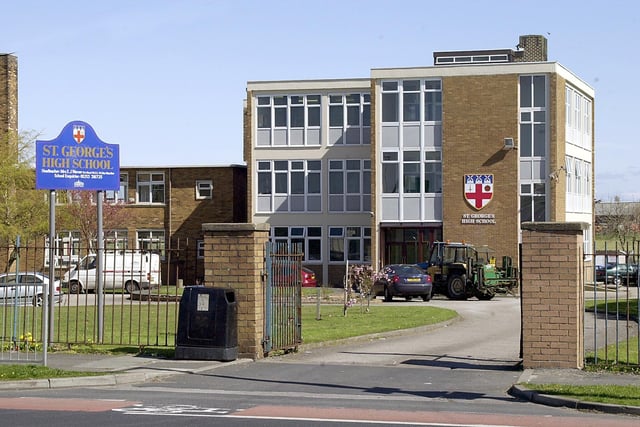
School buildings and infrastructure play a pivotal role in shaping the educational experience for students in the UK. The quality of school infrastructure, including classrooms, recreational areas, technological resources, and accessibility features, can directly influence teaching, learning, and overall student wellbeing. As educational demands evolve, it is essential to ensure that school facilities are not only fit for purpose but also adaptable to future educational needs. This report explores the current state of school building and infrastructure development in the UK, the challenges faced, and the ongoing efforts to improve school facilities to meet the needs of modern education.
Overview of School Building and Infrastructure in the UK
In the UK, school buildings and their associated infrastructure are managed and maintained by local authorities, academy trusts, or independent bodies, depending on the school type. The responsibility for planning and funding new school buildings or refurbishments is often shared between central government, local authorities, and school governing bodies.
The state of a school’s infrastructure includes factors such as:
- Classroom space: Adequate space for learning activities and specialised teaching.
- Technological integration: Access to modern educational technologies like computers, projectors, and Wi-Fi.
- Outdoor and recreational facilities: Playgrounds, sports fields, and other areas for physical activity.
- Health and safety: Ensuring that school buildings comply with safety standards, including fire safety, accessibility, and the health of the school environment.
- Sustainability: Incorporating green building practices, energy-efficient systems, and reducing carbon footprints.
Current Challenges in School Infrastructure
While many schools in the UK are housed in modern, well-maintained buildings, others face significant challenges. These challenges have become more apparent with the increased focus on educational outcomes, student wellbeing, and the need for modern learning environments.
1. Ageing Infrastructure
One of the key challenges facing schools across the UK is the age and condition of existing buildings. Many schools, particularly in urban areas, were built decades ago and were designed to meet educational needs that differ from today’s requirements. Older buildings may lack the flexibility for modern teaching methods and can be prone to problems such as inadequate heating, poor ventilation, or outdated electrical systems.
- Cost of Refurbishment: Renovating and modernising old school buildings can be costly and time-consuming, with schools struggling to secure the necessary funding for large-scale refurbishment projects.
- Limited Space: Older schools may not have the space to accommodate the growing student population in certain areas. The pressure to build more classrooms or expand school facilities is high, particularly in cities where the demand for school places is increasing.
2. Growing Student Population
The UK has witnessed an increase in student numbers due to demographic changes and the rise in the birth rate in some areas. This growth has led to overcrowding in some schools, where classroom sizes exceed optimal levels, affecting both teaching quality and student wellbeing.
- Pressure on Resources: Overcrowding strains resources such as teaching materials, technology, and even the school staff. This can also impact the learning environment, making it harder for teachers to manage larger groups effectively.
- Need for New Schools: The growing student population has necessitated the construction of new school buildings. However, the challenge lies in ensuring that new schools are well-planned, sustainable, and equipped with modern facilities.
3. Integration of Technology
The increasing integration of digital technologies into the classroom requires significant investment in infrastructure. Many schools are working to incorporate IT systems, smartboards, and learning platforms that require a robust technological backbone.
- Wi-Fi and Connectivity: Ensuring that all areas of the school have strong internet access is essential for both teaching and administrative functions. However, many schools, particularly those in rural or underfunded areas, still face challenges with reliable internet and Wi-Fi connectivity.
- Digital Divide: A significant gap exists between schools in terms of technological access. Schools in more affluent areas may have access to the latest tools and devices, while those in poorer areas may struggle with outdated technology or lack of equipment.
4. Accessibility and Inclusion
School buildings must be accessible to all students, including those with disabilities. This requires features such as ramps, lifts, wider doors, and specialised toilets. Unfortunately, many schools were not built with accessibility in mind and may require significant investment to make the necessary adjustments.
- Increased Focus on SEND: The Special Educational Needs and Disabilities (SEND) population is increasing, and more schools are focusing on making their facilities inclusive for all learners. However, not all schools have the resources to meet the diverse needs of SEND students.
- Regulatory Standards: Schools must comply with the Equality Act 2010, which mandates that public sector buildings, including schools, must ensure accessibility for people with disabilities. However, ensuring full compliance often requires additional funding and planning.
5. Environmental Sustainability
With the growing emphasis on sustainability and climate change, there is increasing pressure for schools to adopt environmentally friendly practices and incorporate sustainable building materials into their design.
- Energy-Efficient Buildings: Schools are expected to lower their carbon footprints by using energy-efficient lighting, insulation, and heating systems. Green roofs, solar panels, and rainwater harvesting systems are examples of environmentally friendly initiatives that can be incorporated into school buildings.
- Waste Management: Schools are also focusing on waste reduction and recycling programs to promote sustainable living among students and staff. Schools are encouraged to introduce initiatives such as composting, reduced plastic use, and responsible energy consumption.
Government Initiatives and Funding
The UK government has recognised the importance of improving school infrastructure and has introduced various initiatives to address these challenges. Key programs include:
1. School Condition Allocations (SCA)
The government allocates funding through the School Condition Allocations (SCA) program, which aims to improve school facilities across England. The SCA supports schools with the costs of maintenance and capital projects, such as roof repairs, electrical upgrades, and improving heating systems. However, the funding is often insufficient to meet all the infrastructure needs of schools.
2. Priority School Building Programme (PSBP)
The PSBP is a government initiative aimed at rebuilding or refurbishing schools in the worst condition. This program targets schools with the most urgent need for repair or replacement. Since its launch, hundreds of schools have benefited from this initiative, but the demand for such funding remains high.
3. Free Schools and Academies
The expansion of the free school and academy systems has provided opportunities for new schools to be built with modern infrastructure. These schools are typically designed with a focus on innovation, flexibility, and the integration of technology, ensuring that they meet contemporary educational needs.
4. Local Authority and Trust-Funded Initiatives
Local authorities and multi-academy trusts are also responsible for securing funding for building projects. In some areas, there are efforts to create new schools or expand existing ones to meet local demand. These projects are often funded through local bonds, private investments, or joint ventures with developers.
The Future of School Infrastructure Development
The future of school infrastructure in the UK lies in adapting to the changing needs of students and educational practices. Some of the key trends and goals for the next phase of school building and infrastructure development include:
- Smart and Flexible Learning Environments: Schools will continue to integrate digital tools and technology to support blended learning and facilitate student engagement. Smart classrooms, flexible learning spaces, and collaboration zones will become more common.
- Sustainability as a Priority: New school buildings will increasingly be designed with sustainability at the forefront. This includes using renewable energy sources, implementing green building certifications, and reducing environmental impacts through sustainable construction materials and methods.
- Inclusive and Accessible Design: Future school designs will prioritize inclusivity and accessibility to cater to students with a range of abilities. Universal design principles will be applied to ensure all students, including those with physical or sensory impairments, can fully participate in educational activities.
- Community Hubs: Schools will be developed as community hubs, where facilities such as sports halls, libraries, and auditoriums are shared with the wider community outside of school hours. This model promotes greater community engagement and more efficient use of public resources.
Conclusion
School building and infrastructure development in the UK are critical to ensuring that students receive a high-quality education in an environment that supports their academic and personal growth. While there are many challenges, such as ageing buildings, overcrowding, and the integration of new technologies, the UK government and local authorities are making strides to improve the condition of school facilities. The focus on sustainability, inclusivity, and flexibility will drive future school infrastructure developments, ensuring that schools remain equipped to meet the needs of modern education. As new educational methods and technologies continue to emerge, ongoing investment in school buildings will be essential to providing students with the best learning environments possible.

